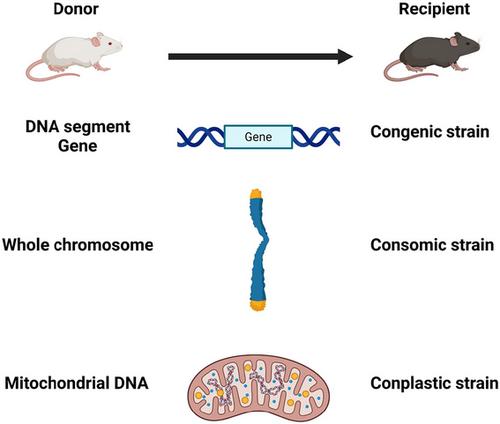{"title":"Working with Miraculous Mice: Mus musculus as a Model Organism","authors":"Anick Standley, Jinhan Xie, Angelica WY Lau, Lauren Grote, Andrew J. Gifford","doi":"10.1002/cpz1.70021","DOIUrl":null,"url":null,"abstract":"<p>The laboratory mouse has been described as a “miracle” model organism, providing a window by which we may gain an understanding of ourselves. Since the first recorded mouse experiment in 1664, the mouse has become the most used animal model in biomedical research. Mice are ideally suited as a model organism because of their small size, short gestation period, large litter size, and genetic similarity to humans. This article provides a broad overview of the laboratory mouse as a model organism and is intended for undergraduates and those new to working with mice. We delve into the history of the laboratory mouse and outline important terminology to accurately describe research mice. The types of laboratory mice available to researchers are reviewed, including outbred stocks, inbred strains, immunocompromised mice, and genetically engineered mice. The critical role mice have played in advancing knowledge in the areas of oncology, immunology, and pharmacology is highlighted by examining the significant contribution of mice to Nobel Prize winning research. International mouse mutagenesis programs and accurate phenotyping of mouse models are outlined. We also explain important considerations for working with mice, including animal ethics; the welfare principles of replacement, refinement, and reduction; and the choice of mouse model in experimental design. Finally, we present practical advice for maintaining a mouse colony, which involves adequate training of staff, the logistics of mouse housing, monitoring colony health, and breeding strategies. Useful resources for working with mice are also listed. The aim of this overview is to equip the reader with a broad appreciation of the enormous potential and some of the complexities of working with the laboratory mouse in a quest to improve human health. © 2024 The Author(s). Current Protocols published by Wiley Periodicals LLC.</p>","PeriodicalId":93970,"journal":{"name":"Current protocols","volume":"4 10","pages":""},"PeriodicalIF":0.0000,"publicationDate":"2024-10-22","publicationTypes":"Journal Article","fieldsOfStudy":null,"isOpenAccess":false,"openAccessPdf":"https://onlinelibrary.wiley.com/doi/epdf/10.1002/cpz1.70021","citationCount":"0","resultStr":null,"platform":"Semanticscholar","paperid":null,"PeriodicalName":"Current protocols","FirstCategoryId":"1085","ListUrlMain":"https://onlinelibrary.wiley.com/doi/10.1002/cpz1.70021","RegionNum":0,"RegionCategory":null,"ArticlePicture":[],"TitleCN":null,"AbstractTextCN":null,"PMCID":null,"EPubDate":"","PubModel":"","JCR":"","JCRName":"","Score":null,"Total":0}
引用次数: 0
Abstract
The laboratory mouse has been described as a “miracle” model organism, providing a window by which we may gain an understanding of ourselves. Since the first recorded mouse experiment in 1664, the mouse has become the most used animal model in biomedical research. Mice are ideally suited as a model organism because of their small size, short gestation period, large litter size, and genetic similarity to humans. This article provides a broad overview of the laboratory mouse as a model organism and is intended for undergraduates and those new to working with mice. We delve into the history of the laboratory mouse and outline important terminology to accurately describe research mice. The types of laboratory mice available to researchers are reviewed, including outbred stocks, inbred strains, immunocompromised mice, and genetically engineered mice. The critical role mice have played in advancing knowledge in the areas of oncology, immunology, and pharmacology is highlighted by examining the significant contribution of mice to Nobel Prize winning research. International mouse mutagenesis programs and accurate phenotyping of mouse models are outlined. We also explain important considerations for working with mice, including animal ethics; the welfare principles of replacement, refinement, and reduction; and the choice of mouse model in experimental design. Finally, we present practical advice for maintaining a mouse colony, which involves adequate training of staff, the logistics of mouse housing, monitoring colony health, and breeding strategies. Useful resources for working with mice are also listed. The aim of this overview is to equip the reader with a broad appreciation of the enormous potential and some of the complexities of working with the laboratory mouse in a quest to improve human health. © 2024 The Author(s). Current Protocols published by Wiley Periodicals LLC.



